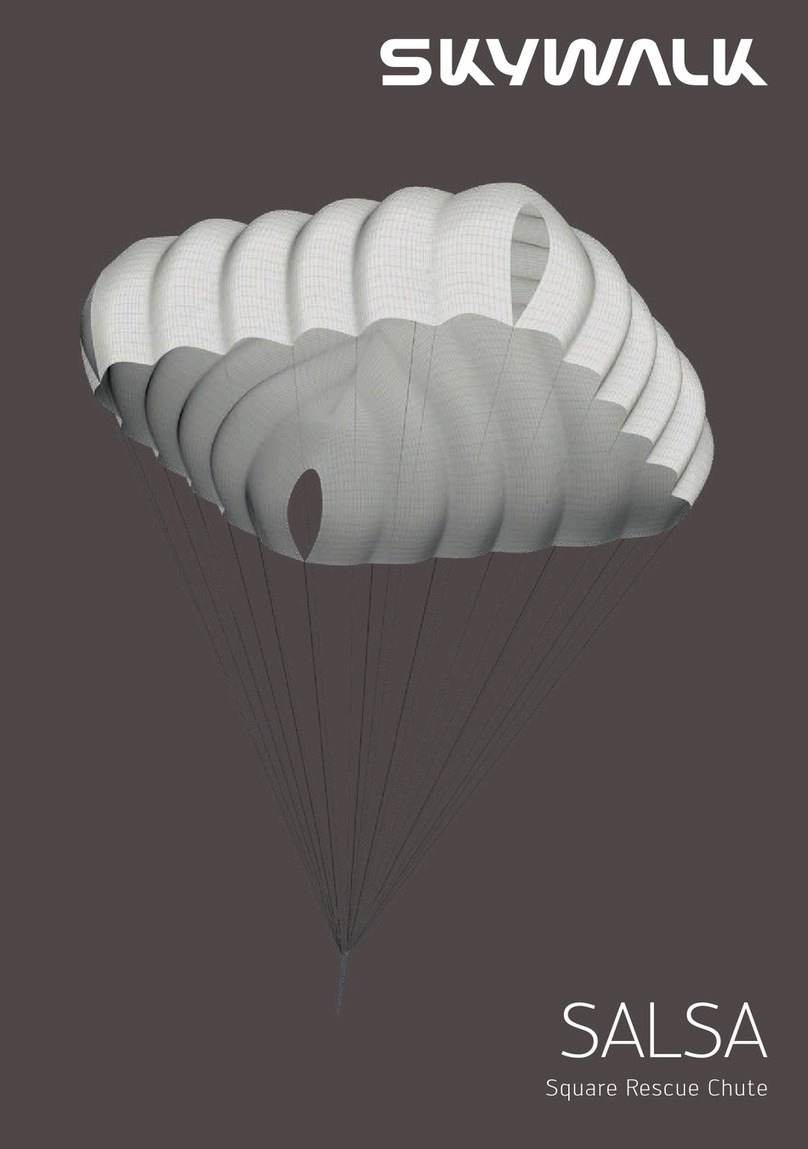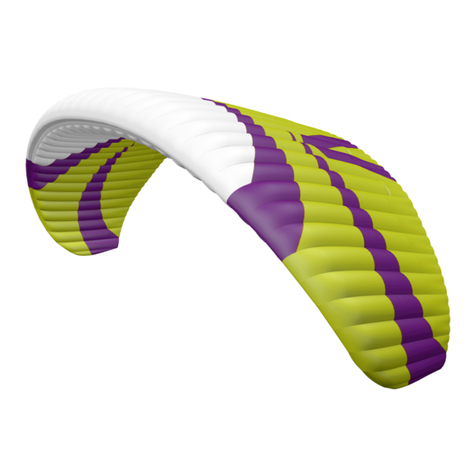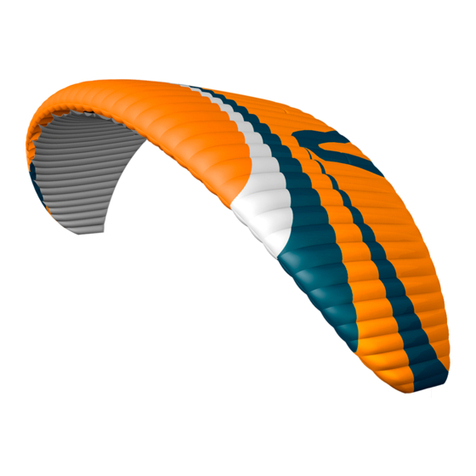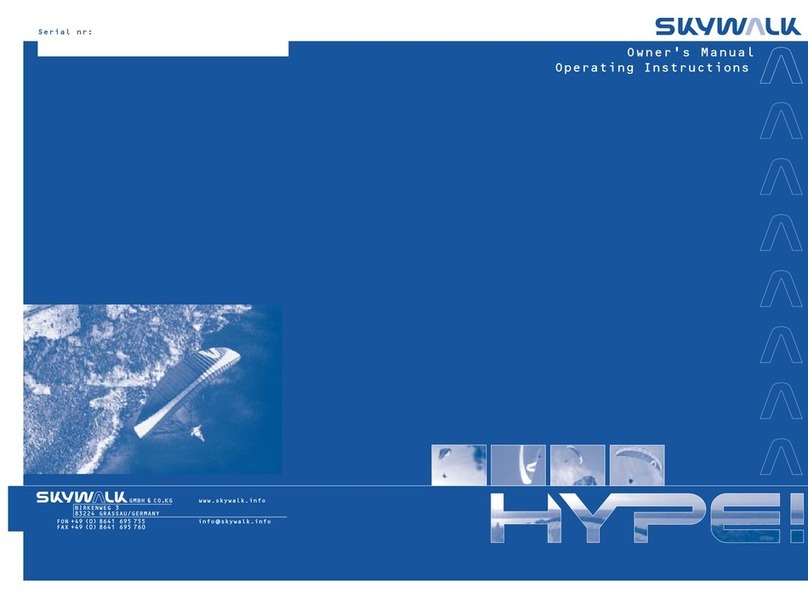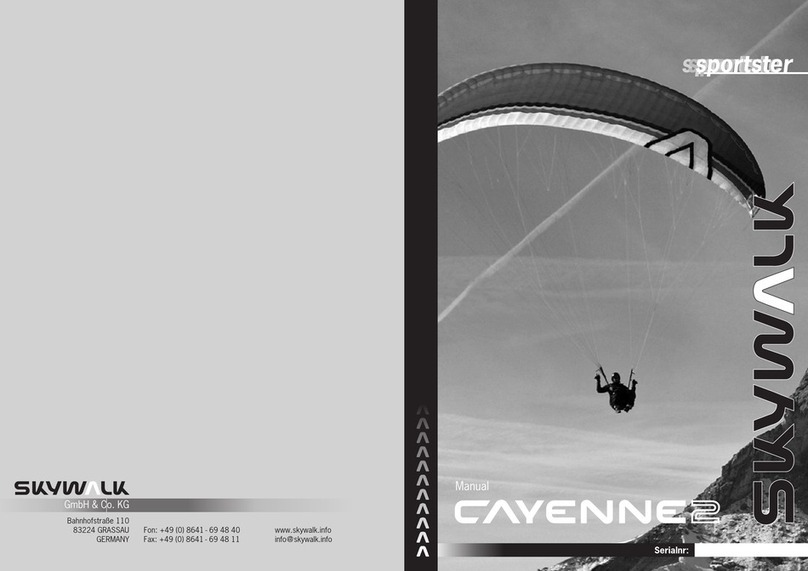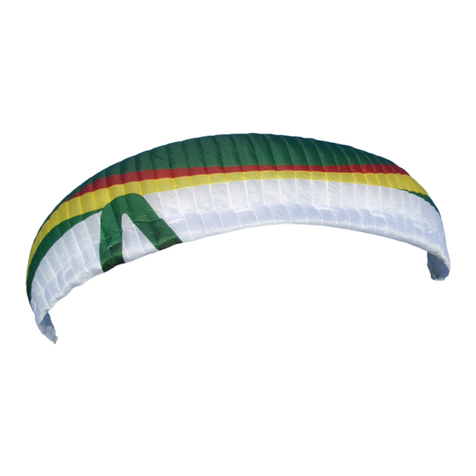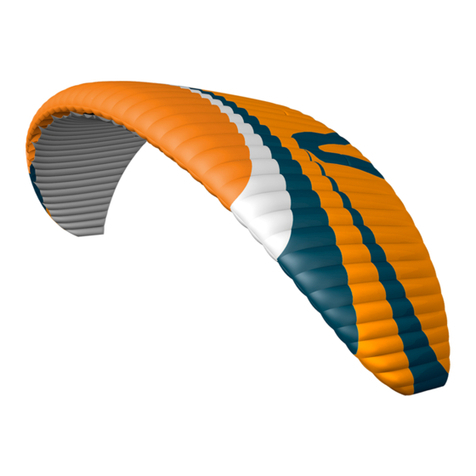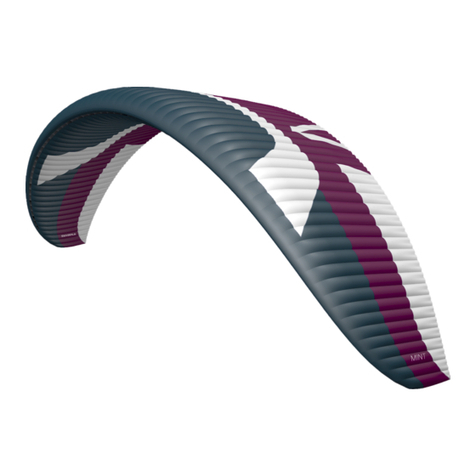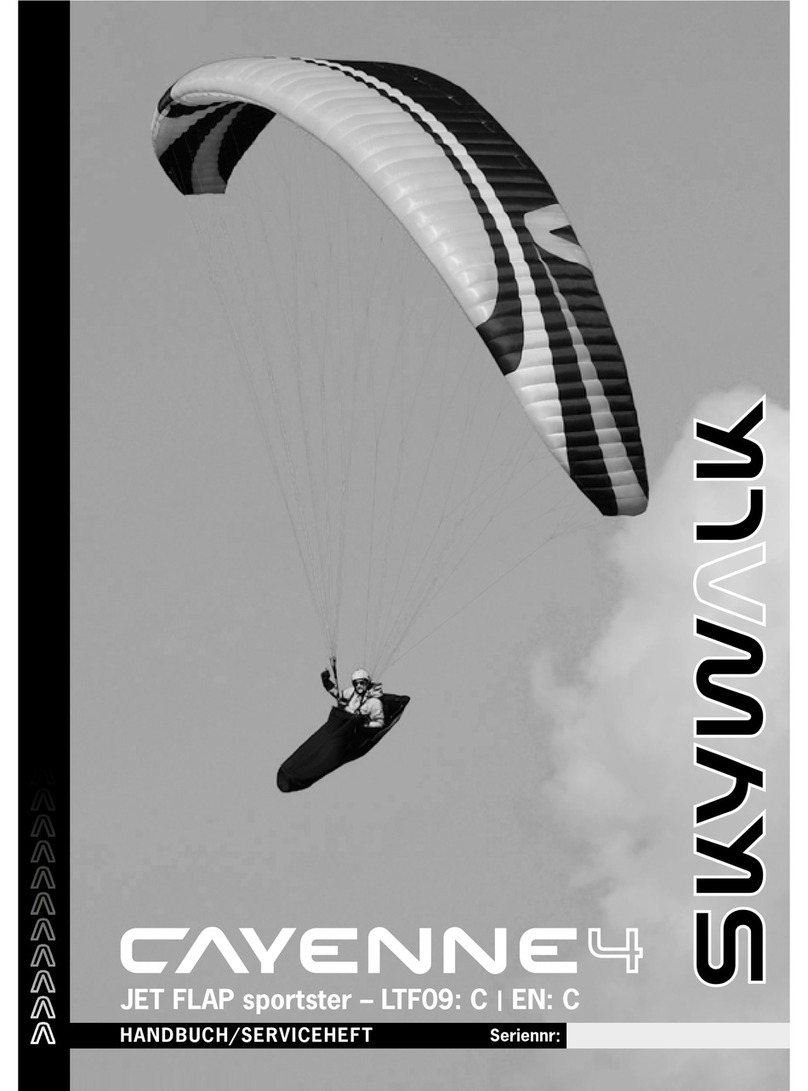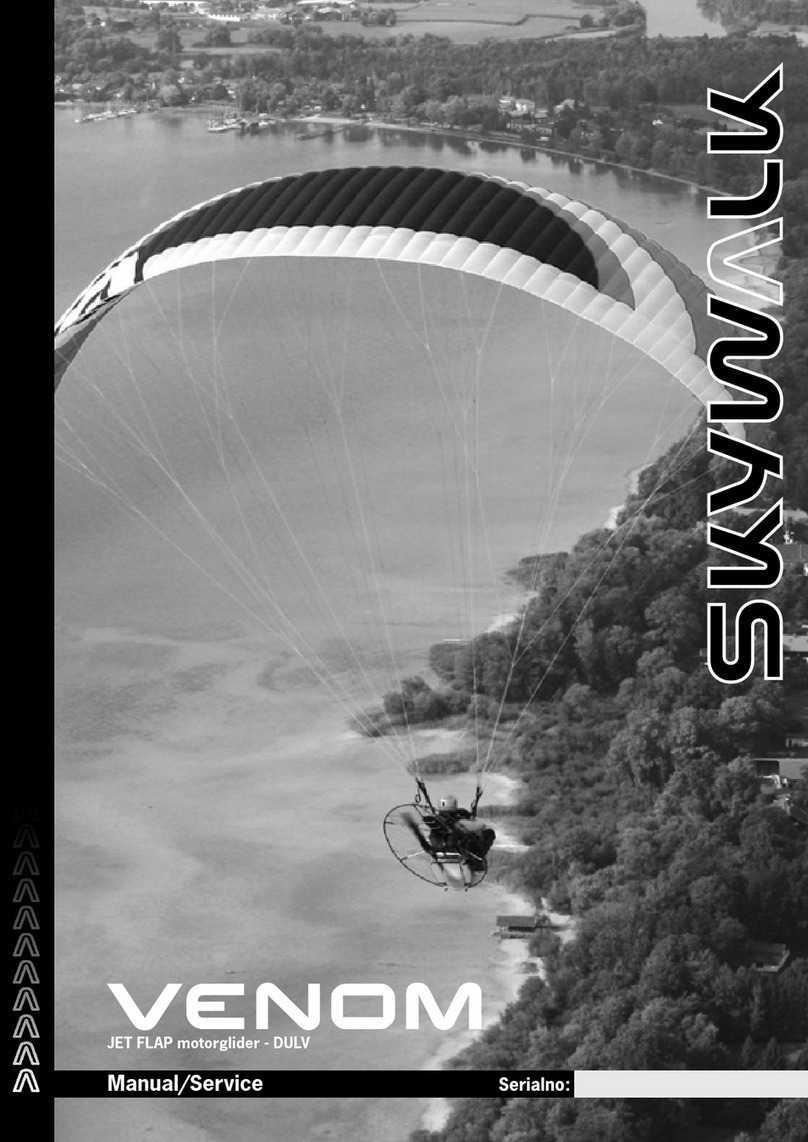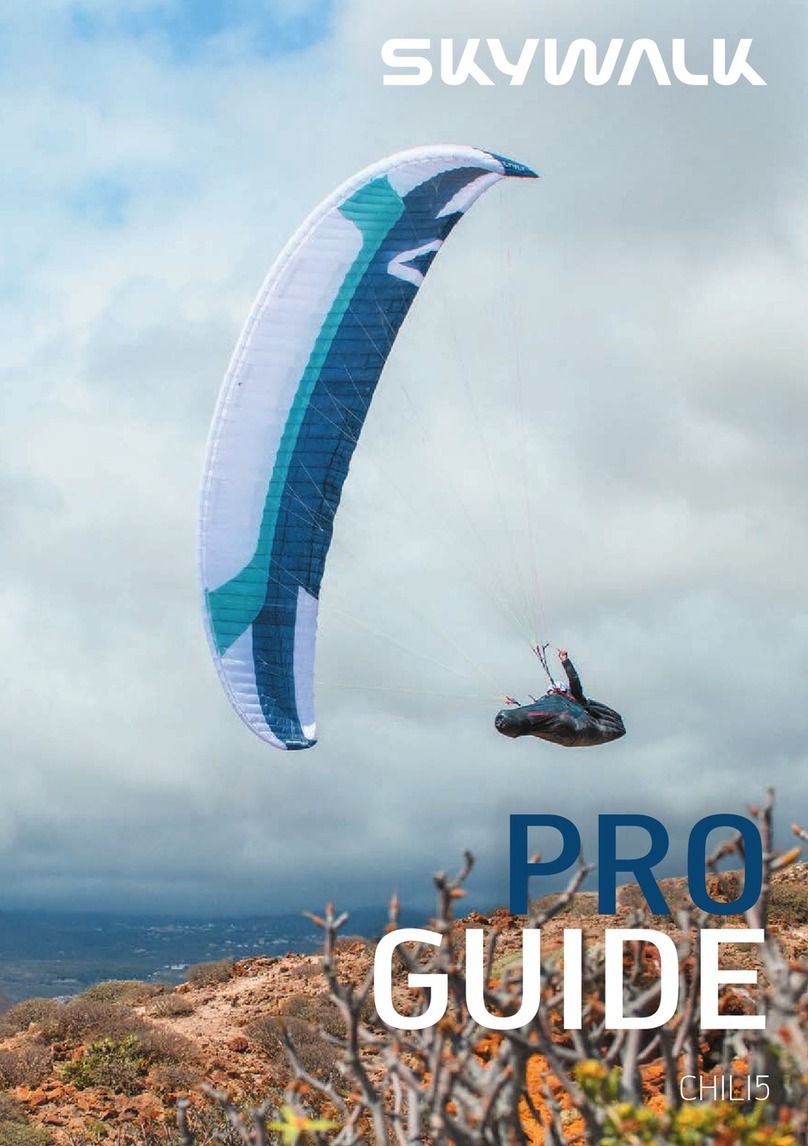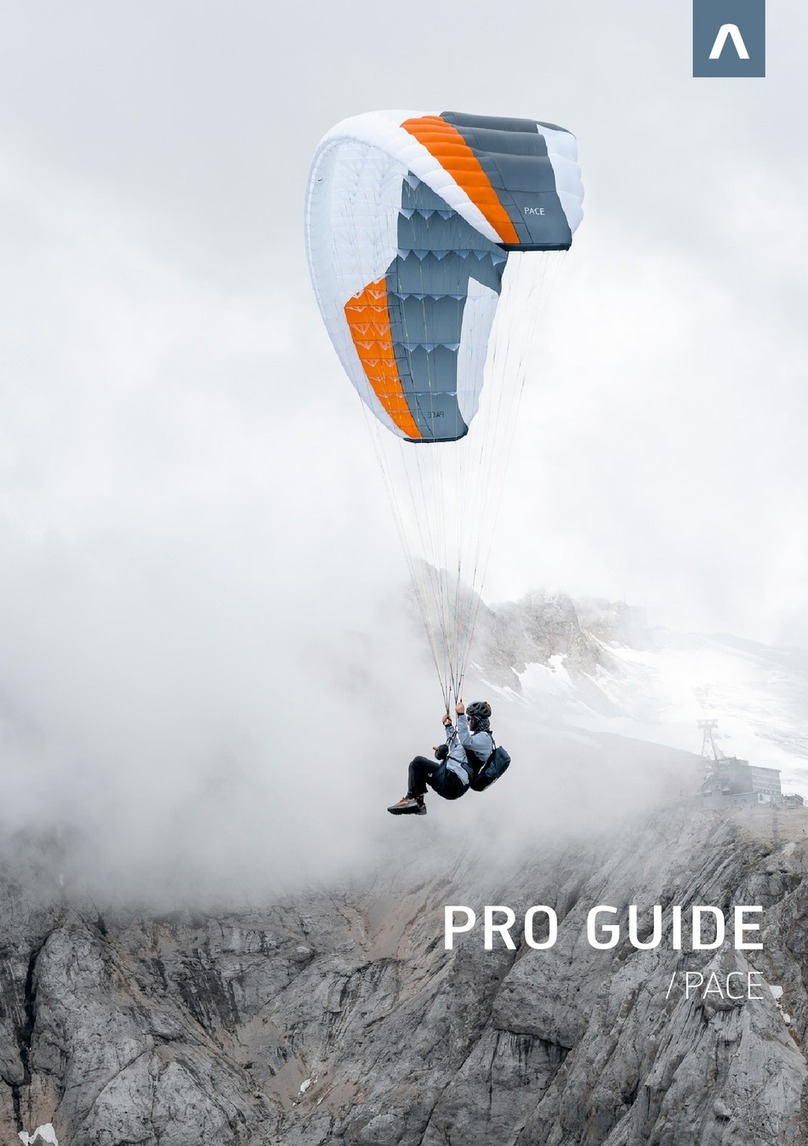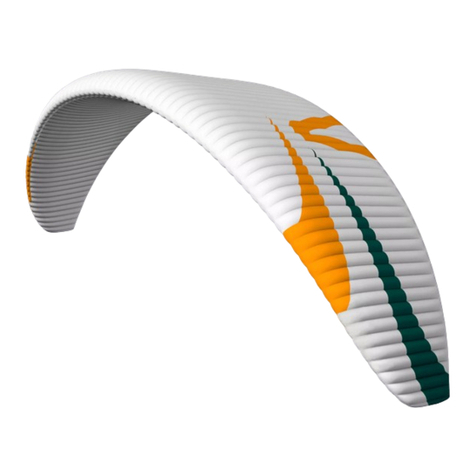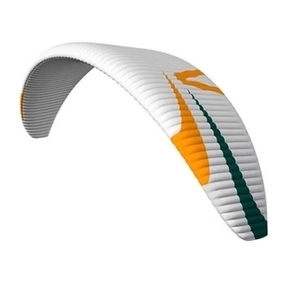
X-ALPS3
TURNING
The skywalk X-ALPS3 is very manoeuvrable and reacts to steering inputs directly and
without delay. Simple weight shift enables you to fly very flat turns with minimal altitude
loss. Combined steering technique: Weight shifting and pulling of the inside brake line
allow extra tight turns. During turning you can control the speed, the curve radius and
banking by additional use of the outer brake. Counter braking or releasing the brake lines
can change these parameters most effectively.
CAUTION
PULLING THE BRAKE LINES TOO FAR AND TOO FAST CAN CAUSE A STALL!
YOU CAN RECOGNIZE AN IMPENDING NEGATIVE SPIN BY THE HIGH CONTROL
LINE PRESSURE AND SLIGHT BACKWARDS FOLDING OF THE WING TIP.
IF THIS HAPPENS, RELEASE THE INSIDE BRAKE IMMEDIATELY.
EMERGENCY STEERING
Should a brake line break or a brake handle become detached, you can still steer and land
the glider with limited control using the C-risers.
ACTIVE FLYING
Active flying means flying in harmony with your paraglider. That means that instead of
flying with the brakes always in the same position, you are aware of the slightest distur-
bances in the air and react accordingly, especially in turbulent thermals.
Never let go of the brake handles, especially in turbulent conditions!
Despite your glider’s high stability, you should constantly use brakes and weight shift
to correct the position of the canopy in turbulence. With a light tug on the brakes you
can constantly keep in contact with the canopy and feel its internal pressure.
That way you can recognize and react early to a pressure drop and impending collapse.
As you gain experience, these reactions will become instinctive.
The skywalk X-ALPS3 rarely collapses even without a pilot reaction.
However, maintaining an active flying style will greatly increase your margin of safety.
Examples:
> To avoid large changes in the angle of attack, release the brakes when flying into
strong updrafts and pull them when flying into downdrafts.
> When flying in turbulent air, if you feel a drop in pressure in parts of your glider, pull
the brake briefly and progressively until the pressure becomes normal again.
If you brake the wing too quickly and too far, you risk stalling it!
LAYING OUT THE GLIDER
If you use your paraglider for the first time we recommend that you practise some
inflations and try some simple flights at a training site. This way you are able to get
used to your skywalk X-ALPS3. Lay out the canopy so that the leading edge is slight-
ly arched.
The middle of the canopy should form the deepest point of the paraglider.
This way the A-lines are tensioned first in the middle whilst inflating.
The paraglider inflates evenly which ensures a stable and straight take off.
The X-ALPS3 is very easy to sort due to the 3 line levels, yet sorting should always be
completed carefully. All lines have to run freely without any knots and twists from the
risers to the canopy.
During flight, tied or crossed over lines can often not be released or untangled!
The brake-lines are lying directly on the ground, so please pay attention that they do
not become entangled during launch. There shouldn’t be any lines beneath the canopy
during take-off. Line-overs can have fatal consequences!
TAKE-OFF
The skywalk X-ALPS3 is easy to launch.
Hold the A-risers and the brake handles in your hands. The brake lines are coloured orange
and the brake handles are black. Hold your arms slightly sideways and backwards like an
extension of the A-risers. Before launching check the laid out glider.
Further check the wind direction and the airspace! Pull rapidly and the canopy of the
skywalk X-ALPS3 will launch and rise above your head. The canopy will inflate fast and
reliably. Keep the paraglider straight above your head and run forward.
Slow down a little as soon as the upward pull decreases. You can open any collapsed cells
by pumping the affected side. Changes of directions that are necessary can be carried
out now. Look and feel that the wing is properly inflated. Don’t make your final decision
to accelerate or to take-off until you are absolutely sure that the wing is properly and
evenly inflated. Otherwise, stop the take-off procedure immediately! During reverse
launches and in strong winds, it is possible that the paraglider surges forward and inflates
faster than intended.
You can counteract this by running towards the glider. We recommend practicing this
demanding launch technique on a flat slope! If you reverse launch it is advisable to only
use the inside A-risers. This way the glider opens a bit more slowly and in strong winds
you don´t have to deal with the full pressure at once.
Flight Techniques and Characteristics 4544 Flight Techniques and Characteristics
EN
